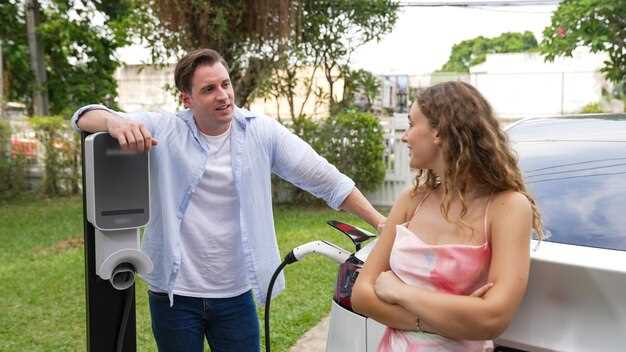
As the popularity of electric vehicles (EVs) continues to soar, the demand for efficient charging solutions becomes increasingly relevant, especially for electric bikes. Understanding how to effectively charge your electric bike at home and while on the road is crucial for maximizing your ride experience and ensuring that your bike is always ready for your next adventure.
Charging at home typically offers the convenience of a dedicated charging station, allowing you to keep your EV powered up overnight or during your downtime. Most electric bikes come equipped with chargers that can easily be connected to standard electrical outlets, making the home charging process exceptionally user-friendly. It’s important to consider the charging times and requirements specific to your bike model to maintain battery health and longevity.
On the road, charging your electric bike can present unique challenges. Identifying the right charging locations and ensuring they cater to EVs is essential. Whether you are traveling through urban areas or exploring scenic routes, knowing where to find charging stations can significantly enhance your mobility and enjoyment. Additionally, portable chargers and power banks can be invaluable tools, enabling you to recharge your bike’s battery even in remote locations where traditional charging stations may not be available.
By familiarizing yourself with these charging methods, you can ensure that your electric bike remains a reliable mode of transportation, whether at home or on your journey.
Home Charging Options: Setting Up Your EV Power Station

Charging your electric bike (EV) at home offers convenience and cost savings. To set up an effective home charging station, consider the following steps and options.
1. Assess Your Electrical Infrastructure: Start by evaluating your home’s electrical system. Ensure that it can accommodate the power requirements of your charging unit. You may need to consult an electrician to assess the capacity of your outlets and circuits.
2. Choose the Right Charger: Select a charger that suits your electric bike’s specifications. There are various options available, such as standard wall outlets, Level 1 chargers, and Level 2 chargers. Level 2 chargers offer faster charging times and are ideal for regular use.
3. Install a Dedicated Circuit: For optimal performance, consider installing a dedicated circuit for your EV charger. This setup ensures that the power supply is not shared with other appliances, reducing the risk of tripping breakers and enhancing charging efficiency.
4. Utilize Smart Charging Technology: Smart chargers allow you to monitor charging sessions, schedule charging during off-peak hours, and track energy consumption. Integrating smart technology helps you manage your charging effectively and can lead to cost savings.
5. Consider Outdoor Solutions: If you have outdoor space, invest in waterproof charging stations that can withstand various weather conditions. Ensure the cable length is sufficient to reach your electric bike’s charging port conveniently.
6. Ensure Safety Measures: Make safety a priority by using chargers that meet industry standards. Regularly inspect your equipment for any signs of wear or damage, and follow manufacturer guidelines for installation and usage.
7. Explore Incentives: Check for local or federal incentives that may support the installation of home charging stations. Tax credits or rebates can significantly offset the installation costs, making it more affordable to set up your EV power station.
By following these steps, you can create an efficient and reliable home charging solution for your electric bike, ensuring you are always ready to ride.
Understanding On-Road Charging: Finding Stations and Usage Tips

As electric bike (e-bike) popularity grows, so does the necessity for accessible on-road charging solutions. When planning routes, it is vital to locate charging stations that can accommodate your bike’s charging setup. Various tools and apps are available to help riders identify nearby charging locations, ensuring a seamless commuting experience.
Many cities and regions have implemented dedicated charging stations specifically for e-bikes, often found at bike-sharing hubs, parks, or high-traffic areas. Utilizing mapping applications allows riders to filter results based on charging capabilities, ensuring they find suitable options. Always check if the station supports the type of connector your e-bike uses, as compatibility is crucial for efficient charging.
When using on-road charging stations, consider these tips for optimal usage:
- Plan Ahead: Before embarking on a long ride, review your route and identify charging stations along the way. This ensures you do not run out of battery in remote areas.
- Charge During Breaks: Use charging time to rest, hydrate, or explore nearby attractions. This makes the charging process enjoyable and productive.
- Follow Station Guidelines: Each station may have specific rules regarding charging duration and etiquette. Respecting these guidelines encourages a positive environment for all users.
- Monitor Battery Levels: Keep an eye on your bike’s battery status to avoid surprises. Knowing when to recharge can help you manage your overall ride time effectively.
By understanding how to locate and utilize on-road charging stations, you can enhance your e-biking experience and make the most of your rides, whether for commuting or leisure.
Maintenance and Safety Considerations for Charging Your Electric Bike
When it comes to charging your electric bike, a proper setup is essential for both efficiency and safety. First and foremost, ensure that you are using the correct charger designed specifically for your bike’s battery. Using a charger that is incompatible can lead to battery damage or safety hazards.
It is crucial to regularly check the condition of cables and connectors to prevent any electrical issues. Look for signs of wear, fraying, or corrosion. Damaged components could pose serious risks, such as short-circuiting or electrical fires.
When setting up your charging area, select a space that is dry, well-ventilated, and away from any flammable materials. Avoid charging your bike in places where moisture can accumulate, as water exposure may lead to electrical failures.
Monitor the charging process; never leave your bike unattended while it is plugged in. This step ensures that you can quickly respond to any abnormal occurrences, like overheating or unusual smells, which may indicate a malfunction.
Furthermore, adhere to the manufacturer’s guidelines for charging duration. Overcharging can significantly reduce battery life and performance, so it’s important to disconnect the charger once the battery is fully charged.
Lastly, consider investing in a surge protector for your setup to guard against power spikes that can damage your bike’s electronics. Regular maintenance checks on both the charging setup and the bike’s battery health will go a long way in ensuring your safety and extending the lifespan of your electric bike.
